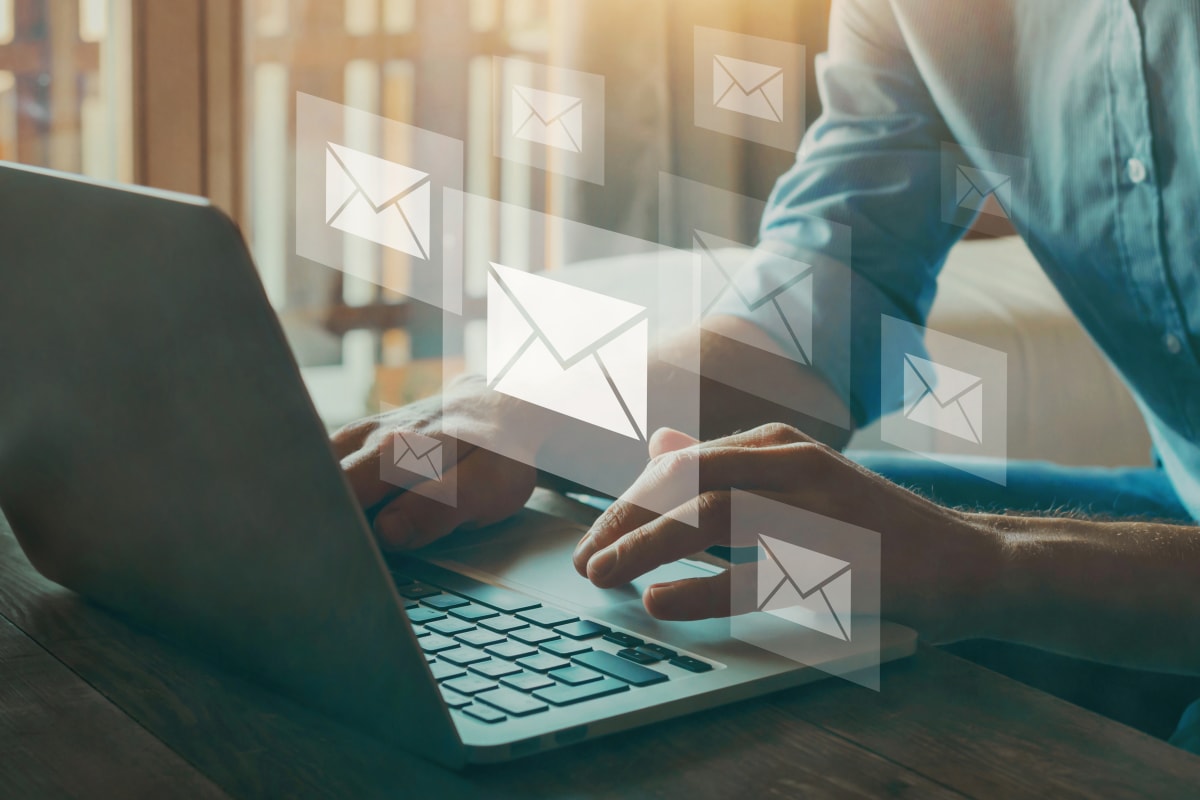When you open your in box, chances are you’re greeted with your share of spam, messages from friends, newsletters, and yes, even actual business. Here are tips for managing your email so it doesn’t manage you!
Starting your dream business?
ZenBusiness will file your business formation paperwork for $0 + state fees. Plus, we offer additional services to help you run and grow a business.
How often should you check it?
Some people suggest only checking your e-mail twice a day and spending as little time on it as possible. This is unrealistic. Many of our most important communications are done now through e-mail. For many business people, e-mail is integral to their marketing and selling efforts– cutting back on that would mean missed opportunities. Rather than thinking of all e-mail as a big time drain, consider the purpose of each message and ask “Is this a good use of my time?” It’s one thing to spend a couple hours a day keeping in touch with prospects via e-mail and scanning newsgroups for leads; it’s quite another thing to spend a couple hours sending routine hellos to friends, reading jokes, or wading through spam.
Methods for sorting & prioritizing e-mail
If you get a great deal of e-mail, one way to make sure you see the most important messages first is to have two different accounts. Your main e-mail address would be for general use–this is the one you put on your business card. The second e-mail address would be like an unlisted phone number– you only give it to select people, such as important clients. Another way to sort incoming e-mails is by using the filter function built into your program. This automatically routes incoming messages from specified people to their own separate folders. You can use filters to separate business from personal e-mail. You can even direct different clients’ messages into their own unique folders. Filters can also intercept junk mail. Set your filter to detect incoming messages that contain words like “dear friend,” “win,” “make money,” “hot,” “sexy” and the like so they go directly to the trash bin.
Process promptly, then file or delete
Whenever possible, read each message once then either file it, or delete it. The only e-mails that should linger in your inbox are those that you haven’t read yet or that require an action from you. Keeping your e-mail In-Box lean is a big time-saver-it turns your inbox into an extension of your to-do list. You know that items in your inbox require an action, whereas messages you’ve dealt with have been filed or archived. For e-mails you must keep, create folders for clients or projects and drag and drop E-mails, after you’ve read them, to the proper folder. But don’t create too many specific folders-this wastes time later, when you need to find an old e-mail you’ll have too many places to look. Another method is to archive all e-mails in one big folder-then you never have to wonder which file you put it in. Regardless of which method you use, periodically go through all your folders and delete anything you no longer need.
Don’t print out e-mails
Break the habit of automatically printing all your e-mails. It greatly increases the amount of paper you have to deal with, wasting tons of time. Both filing and retrieval is far quicker in your computer-all it takes is a couple of mouse clicks. The ideal is to use contact management software such as ACT or Goldmine-each e-mail is linked to the name of the person who sent it to you, also e-mails you sent are linked to the recipient’s record. The only time it’s necessary to print hard copy of an e-mail is when it pertains to a project for which most information is on paper. Print it out and place it in that file.
Useful Subject Headers
Few things are more frustrating than scrolling through dozens of vague subject headers such as “FYI,” “Meeting,” and “Question.” The solution? Put specific subject headers in all the e-mail you send; when recipients reply, your header will carry over. The result: your stored e-mails will have clear subject lines such as “Agenda for April 3 staff meeting” and “Question about Smith account” rather than vague headers. Some e-mail management programs permit you to change headers on email already received, so if someone sends you an e-mail message with a vague subject line, you can change it. Some programs, such as Outlook, have powerful search functions that permit text string searches, so if you have trouble finding an e-mail, you can fall back on this function.
Fast replies
If you get lots of e-mail inquiries about the same issues over and over, create templates in your e-mail program for quick, routine replies. You can customize them but it’s still faster than writing from scratch.
To E-Mail or Not to E-mail
E-mail is a great time-saving tool when you’re sending the same message to several people, or when you need record of exactly what was discussed such as project details. It’s also more private than faxing–when several people share one fax machine, it’s easy to see other peoples’ incoming faxes. But sometimes e-mail wastes more time than it saves. Don’t e-mail an urgent message unless you’re certain the recipient is in the office and checks e-mail continually. Most people rely on voice mail when they’re out of the office. Also, if you need a back-and-forth discussion, why send e-mails back and forth for days when you can settle the matter on the phone in a couple minutes?
Disclaimer: The content on this page is for informational purposes only, and does not constitute legal, tax, or accounting advice. If you have specific questions about any of these topics, seek the counsel of a licensed professional.
Jan Jasper © 2002
We’re here to help you
Let us help you start and grow your business with our fast, worry-free services. It’s just $0 + state fees to bring your idea to life.



